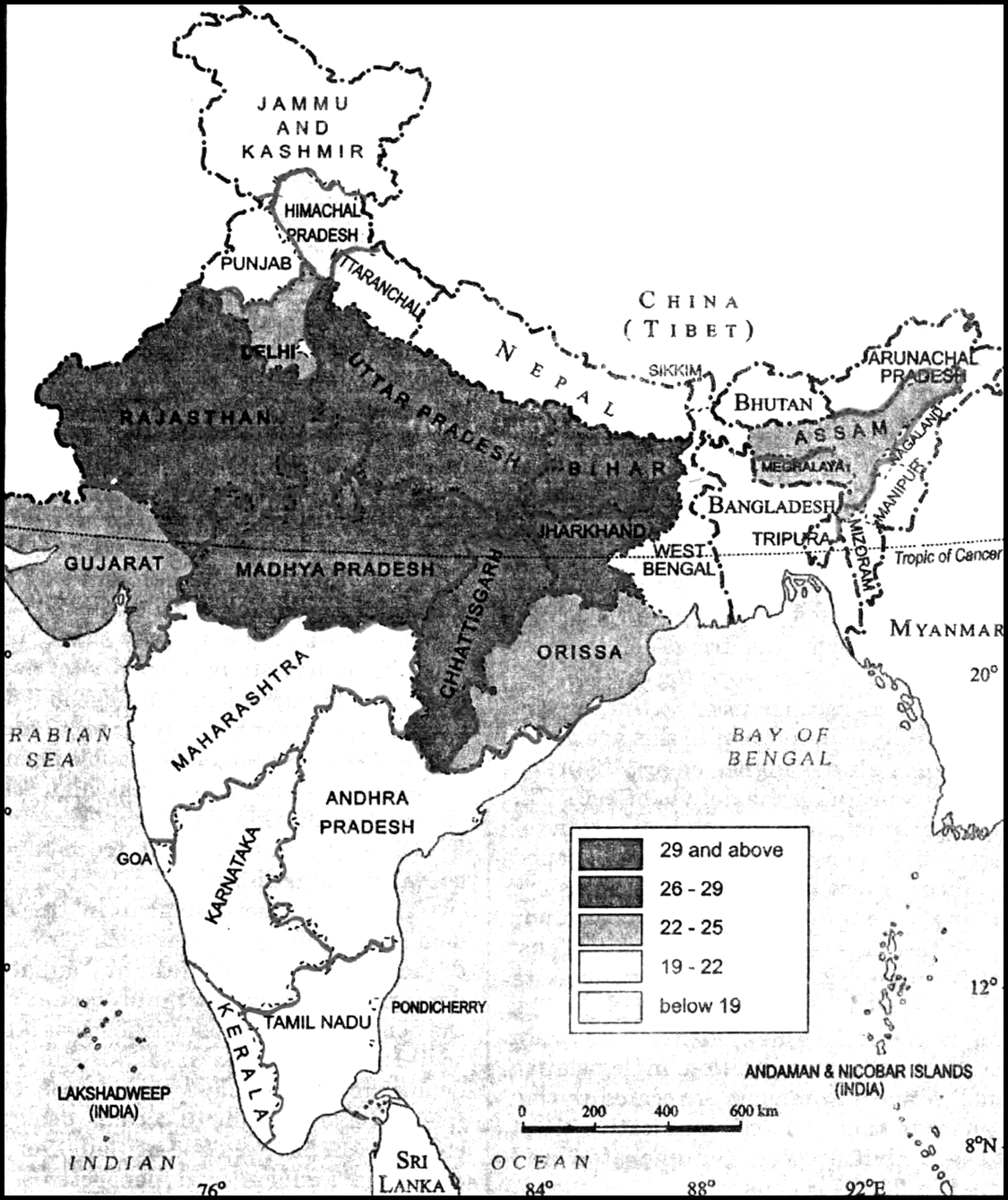Discuss the decline in child sex ratio statewise as per data of 2001 census.
As per data available from the census of 2001, sex-ratios at the state level offer even greater cause for worry. We see in the following map that as many as six states and territories have a child sex ratio of under 900 females per 1000 males in Punjab is the worst off with an incredibly low child sex ratio of 753 i.e. the only state below 800). It is followed by Haryana, Chandigarh, Delhi, Gujarat and Himachal Pradesh. The states like Uttaranchal, Rajasthan, Uttar Pradesh and Maharashtra are under 925 while Madhya Pradesh, Goa, Jammu and Kashmir, Bihar, Tamil Nadu, Karnataka and Orissa are about the national average of 927 but below the 980 mark. Even Kerala, with the best overall sex ratio does not do too well at 969 while the highest child sex ratio of 986 is found in Sikkim.
Reasons for this sharp decline in child sex ratio are according to demographers and sociologists as under—
(i) Neglect of girl babies in infancy leads to higher death rates.
(ii) Killing of girl babies due to religious or cultural beliefs.
Evidences—(a) Development of Ultra Sound technology i.e., Sonogram by which the sex of unborn baby can be determined in the early stages of pregnancy.
(b) It is not the cause of poverty that compels people to adopt selective abortion of female foetuses as we see the most prosponds regions like Delhi, Punjab, Haryana, Chandigarh, Gujarat and Maharashtra are the states with the lowest child sex ratio.
(c) Economically prosperous families decide to have one or two children hence, they wish to choose the sex of their child through sonogram (i.e. an X-ray like diagnostic device).

Child (0-6 years) sex ratio in India





